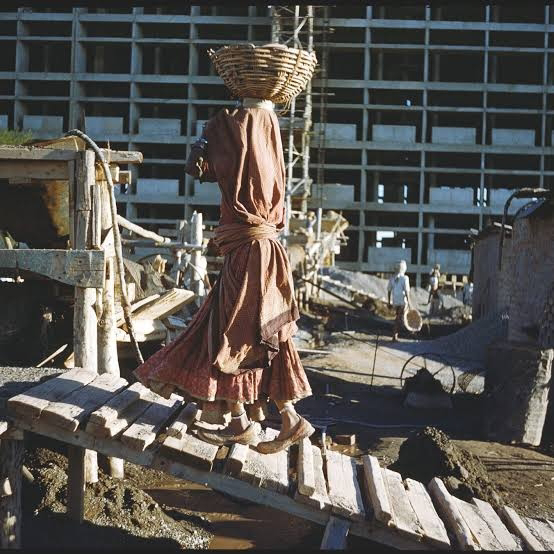Decoding Le Corbusier through Charles Correa (Part 2)
Ernst Scheidegger, via Museum of Modern Art, New York.
This is in continuation to reviewing Charles Correa's book, A Place in the Shade.
It is no doubt that Corbusier's involvement paved the path to all modern architecture in India but the amazing fact was that he respected India's culture, something Correa also values in his principals. Corbusier through this, was able to build the new architectural style that put India in the cutting edge of architectural marvels; where architects from around the world were trying to replicate this technology and design seen in India. Along with this, Correa also points out that reason this work remains valued to the date, is because everything about it was born out of and also tailor-made for India. The understanding and execution of this context makes any architectural work valid and timeless.
■
Correa talks about Corbusier and how his big philosophies didn't materialise in designing Chandigarh. Something similar seen happen to other great visionaries like him. This didn't mean that a person like Corbusier would abandon his ideas, but would instead choose to condense, mould and transform them to fall in line with projects that he will receive in his life time. Not all of his projects will be based in a buzzling metropolis, but his idea of connecting to this polis carries forward in this projects as they become iconic bringing the city to them.
■
Uniqueness of Corbusier's contract with the Indian government forced him to visit India twice a year, and with each visit spanning a month with Indian architects, planners, designers etc; established the connection among the two parties where knowledge and observations would be shared. This established in Corbusier the understanding of the context of the place he was designing for, and for the designers in India to know how to adapt western philosophy to their context. Correa also comments on the site specific nature of architecture. It cannot be replicated without keeping in mind the context of the site.
Correa then shifts his laser focus on the planning of Chandigarh, he points out how Corbusier had grandiose plans about the ideal city, but never got the opportunity to realise them until Chandigarh. He also very quickly realised that he wasn't able to do it justice. Corbusier was an awesome architect, who would be able to make sculptural forms with exceptional materials with the sensitivity to carefully house human occupation, but never to the scale of an entire city. Correa points out how Corbusier designed monotonous and disparate housing typologies and unthoughtful road layouts. Correa speculates as to why Corbusier would allow this, guessing that he wouldn't have looked into them, but tasked it to his team members. The housing of Chandigarh contrasts Corbusier's idea of a city! Then why make it all together?
This should have been of Corbusier's ornate interest or passion for architecture and the effort he took into designing the Capital Complex. Even the unbuilt Governor's Palace is an exemplary feat of design that would have been at the status of what Corbusier wanted to show case in Chandigarh.
Correa goes back to Lutyen's design for the New Capital where Lutyen's British snobbery established a very colonial architecture, ignoring the Mughal and other indigenous architecture of the country. And when the British were gone, India held to this architecture and built the city, helping the old British motives along with them.
He points out that Corbusier's planning and lack of addressing equity in a city causes the same effect, as officials take housing that is made for the cream of the crop, which is happens to be them. A cycle of the similar symbolism and motif will keep on continuing. This works against the amount of care that went into coming up with this new landscape of architecture that is seen in the Capital Complex. Correa delves not just into the architecture, but the politics, sociology and the cultural context of India while analysing Corbusier. He shows how to critique and analyse architecture, something as time tells, is rarely is given importance.


Comments
Post a Comment